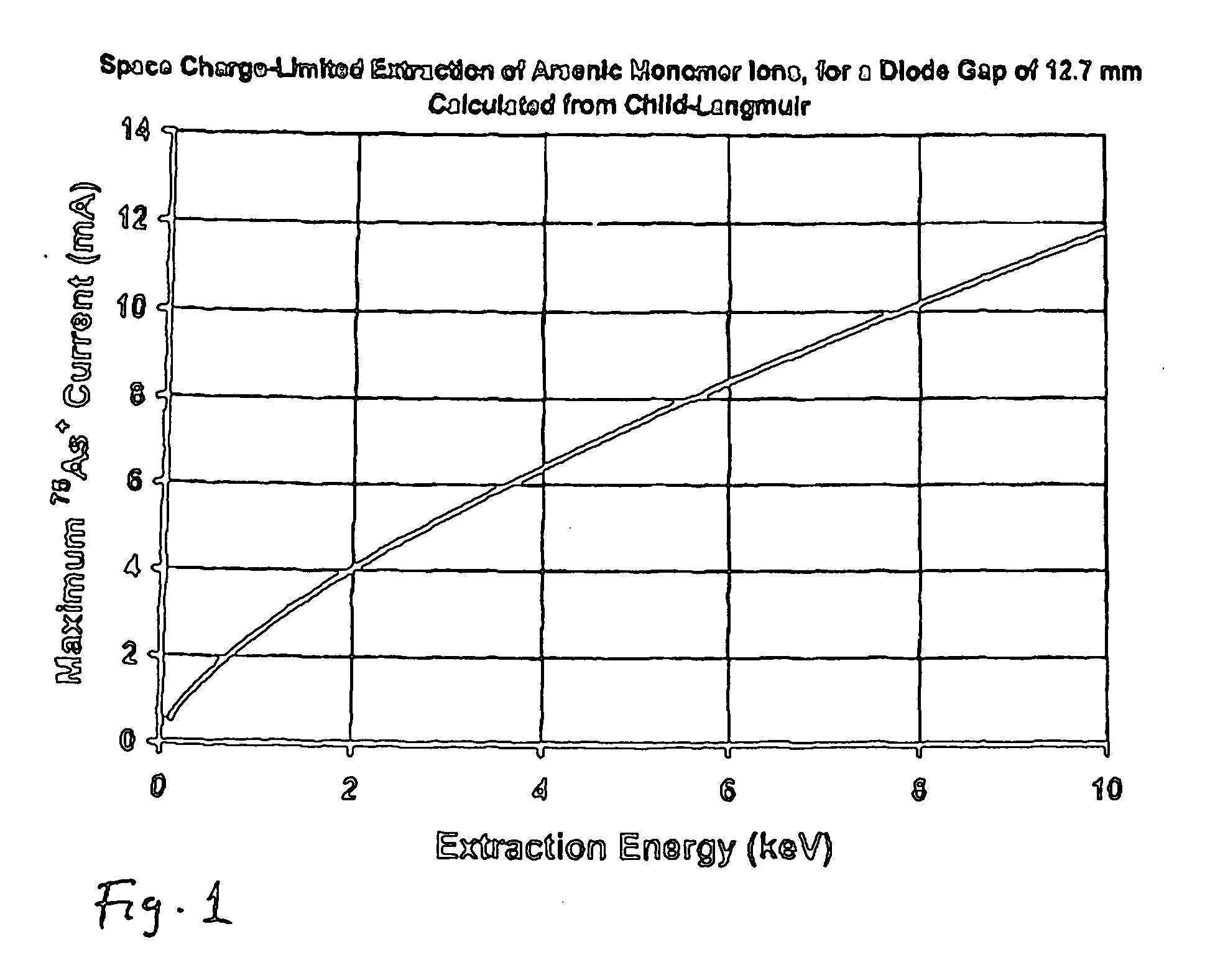Method of manufacturing CMOS devices by the implantation of N- and P-type cluster ions
- Summary
- Abstract
- Description
- Claims
- Application Information
AI Technical Summary
Benefits of technology
Problems solved by technology
Method used
Image
Examples
Embodiment Construction
[0052]FIG. 2 is a conceptual diagram of a cluster ion source 10 and its various components. A supply of feed gas 11 is provided, such as a cylinder of AsH3, PH3, B2H6 or vaporized B10H14. The feed material can be stored in a cylinder as a gas at room temperature, or can be introduced as vapor sublimated from a heated solid or evaporated from a liquid phase. The feed gas supply 11 is connected to an ionization chamber 13 through a flow controller 12. The flow controller 12 can be as sophisticated as a computer-controlled mass flow controller, or as simple as a connecting tube with predetermined gas conductance. In the latter case, the flow is varied by controlling the pressure of the gas in 11. The controlled flow of dopant-containing gaseous feed material creates a stable gas pressure within the ionization chamber 13, for example, between approximately 3×10−4 Torr and 3×10−3 Torr. Ionization energy 14 is provided in the form of a controlled current of electrons with a defined energy...
PUM
 Login to View More
Login to View More Abstract
Description
Claims
Application Information
 Login to View More
Login to View More - R&D
- Intellectual Property
- Life Sciences
- Materials
- Tech Scout
- Unparalleled Data Quality
- Higher Quality Content
- 60% Fewer Hallucinations
Browse by: Latest US Patents, China's latest patents, Technical Efficacy Thesaurus, Application Domain, Technology Topic, Popular Technical Reports.
© 2025 PatSnap. All rights reserved.Legal|Privacy policy|Modern Slavery Act Transparency Statement|Sitemap|About US| Contact US: help@patsnap.com



